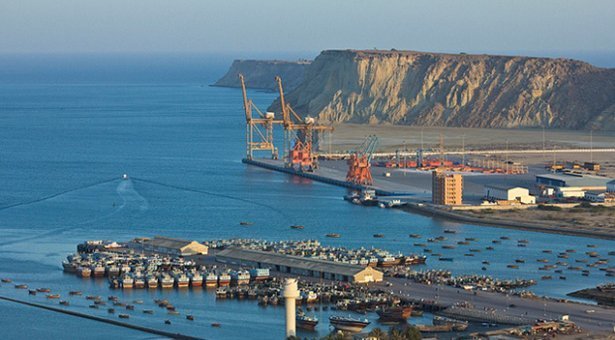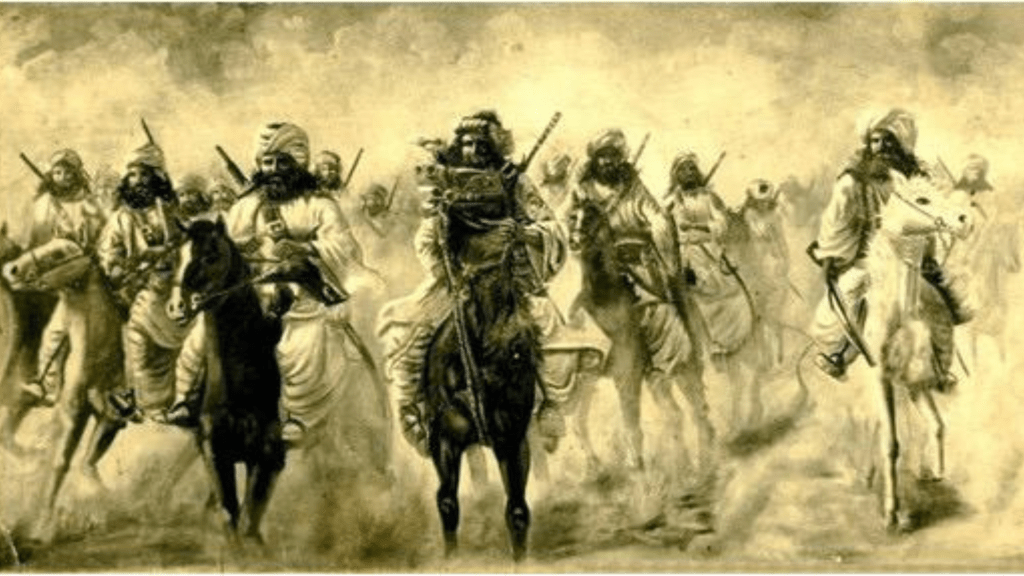This article was first published in German magazine Pogrom. It has been translated from the German by the writer himself.
It is one of China´s boldest steps to shape economic globalization towards a Chinese model and there cannot be a better partner than Pakistan on this front. On the offer are trade routes, resources and strategic bases. But the biggest losers of these big plans are the people of Balochistan.
The Belt and Road Initiative (BRI), also known as the New Silk Road, is China´s multidimensional economic initiative designed to link China with Asia, Africa and Europe. It has also been called as the Chinese Marshall plan, or in simple words, China´s master plan to shape globalization, according to its wishes. The project is already considered one of the largest infrastructure and investment projects in history showing China´s desires to expand its hegemony.
The word “Belt” refers to land corridors and “Road” refers to the Maritime Silk Road which is the corridor of sea routes. One of these land corridors starts from China´s restive Uyghur people´s Xinjiang region, runs through Pakistani-held disputed territory in Giligit-Baltistan and ends at the Gwadar port in Pakistan´s restive province of Balochistan. This trade route forms the so-called China Pakistan Economic Corridor, also known as CPEC.
It is estimated the whole plan will cost China several trillion dollars. However, the highest price must be paid by the Muslim minority Uighurs in Xinjiang and the Baloch people in Pakistan in the form of lost economic, social and cultural freedom with the arrival of the renewed exploitation, persecution and marginalization as neither China nor Pakistan takes their rights into consideration.
The Baloch are a group of people who are indigenous to the divided region of Balochistan. The Baloch have their own distinct customs, culture and traditions. They speak an Indo-Iranian language called Balochi. Nevertheless, the Baloch have their own territorial region and live in alliance with other ethnic groups on regional or linguistic and cultural grounds.
Historical background of Baloch conflict in Pakistan
The history of the conflict dates back to late 19th century with the beginning of the British efforts to find a safe passage through Balochistan to Afghanistan. The British initially tried to bring Balochistan under British colonial influence, while Balochistan strove to remain a free country, but soon, in a subsequent conflict, it ceded to British subordination.
In 1948, Balochistan was annexed by Pakistan and since then, there have been several uprisings against the Pakistani government. The demands ranged from a larger share of resources to autonomy and, in some cases, the creation of a separate state.
The colonial government used an excessive and brutal state apparatus to exercise power over the indigenous societies and colonies. Pakistan inherited the British structure of colonial governance with power lying in a military-bureaucratic establishment. This hindered the process of developing a fully functional democracy. As such, Balochistan has always been dealt as a colony of an army which at times ruled directly over the federal government and at times pulled the strings from the background.
Pakistan – A natural ally of China’s OBOR-Marshal Plan
The China-Pakistan relationship has for a long time been labelled as an all-weather friendship, often described as higher than the mountains and deeper than the oceans. This relationship started to build up when Pakistan recognized the People´s Republic of China in 1950. During the period from 1966 to 1972 the relationship grew to consummate into a strategic alliance which relied mostly on shared animosity towards India. By this time Pakistan had had already fought three wars with India in 1947, 1965 and one in 1971 which resulted in the secession of East Pakistan into Bangladesh.
In this time period, China had also gone in war against India in 1962 when hostilities grew over a disputed Himalayan border after India had granted asylum to the Tibetan spiritual leader Dalai Lama.
The strategic alliance was the foundation for the two country´s durable military and strategic cooperation colluding in developing nuclear technology, military hardware and ballistic missiles, often focused against India. As a result, China became Pakistan´s largest supplier of arms. But the relation between the two countries had never been such a multi-dimensional socio-economic, people-to-people and geographical integration such as the proposed CPEC.
Besides from securing an ally against India in the shape of China, Pakistan also hopes to gain legitimacy over the territory of Giligit Baltistan which is disputed between India and Pakistan. Pakistan understood the Chinese presence through these projects in Gwadar´s strategically important port as territorial and economic security guarantee against India. Thus, for Pakistan, China was the best ticket out of instability and economic weakness.
Balochistan: A saga of economic exploitation
The province of Balochistan in Pakistan is only one part of the historical Greater Balochistan region which was occupied and divided among Iran, Pakistan and Afghanistan during the British colonial era. The Pakistani part is as big as Germany and forms 44% of total landmass of the country. It is sparsely populated and rich in mineral and gas resources.
Yet it is one of the poorest regions in the world. Barely 25% of the population is literate, and just 7% of the population has access to tap water, that too not guaranteed to be safe for drinking. Around 93% of the population gets their water from wells and ponds and hence frequent water-borne diseases kill numerous people each month. According to Pakistan´s first ever report on multidimensional poverty in 2016, 71% of people in Balochistan are living below the poverty line. The maternal mortality rate is one of the highest in the world.
CPEC: An expansion of socio-economic exploitation
The China-Pakistan Economic Corridor (CPEC) is dubbed as a game changer in the economic development of Pakistan. The project is being portrayed as a source of prosperity for the otherwise struggling Pakistani economy.
Official narrative terms CPEC as a remedy to alleviate the sense of deprivation for last 70 years in the province of Balochistan claiming to change the life of native people for good. Both the Pakistani civil government and the military establishment have left no stone unturned to take credit for this marvel. However, it has already been established that the standard of living of indigenous masses are not changed for the good by expansionist mega projects.
Writer Ahmed Kulmeer estimates the negative consequences of the port’s expansion in his Balochistan Times article ‘CPEC: A game changer or a disaster?’. He argues, the people of Gwadar living exclusively on fishing will not benefit from the expansion of the port to a deep-sea port. In the long run, they will be deprived of their livelihood, as the traditional fishing boats, the small wooden boats called “Yaddar” and age-old fishing techniques of most of coastal area are capable of only fishing in the local areas rather than deep sea fishing. With the development of the deep-sea port, a major catchment area of these small boats is already gone. The environmental impact of the port has already made certain species of fish extinct in the area.
There are no measures that integrate local people into CPEC and the expansion of the port. The local Baloch people will not be able to continue their traditional life.
This expected influx of foreign workers will result in elimination of already marginalised native people. China has also plans to settle around 500,000 Chinese by the year 2022 in Gwadar in a new financial district. This means if the plan goes ahead smoothly there would be around 8 Chinese for every single native Baloch in Gwadar just in the course of next four years. Bearing the entire in mind, CPEC makes more common sense to be a project of sheer exploitation rather than an engine of real economic development.
The contract to operate the strategically important gateway of CPEC, Gwadar port, was awarded in a suspicious secretive manner to a little-known company with unknown credentials by the name of China Overseas Port Holding Company (COPHC) in 2013. The company was only assumed to be China’s state-owned company. There was no participation of the local or the provincial government in the Gwadar Mega Project when the Ex-dictator General Musharraf conceived the project back in early 2000s. Nor there was any participation when OBOR was introduced as CPEC in Balochistan enabling China to further increase its presence here without any check.
OBOR: Roads for mineral resource exploitation
Balochistan has always had weak infrastructure; rail lines and roads were only built for military purposes or mineral exploitations. As work started for the first phase construction of the port, the first dual carriage highway was also in the meantime completed by 2004. This highway connects the port town of Gwadar to Karachi, one of the largest cities of Pakistan.
Prior to the construction of this coastal highway, it took anywhere from two to three days for the locals of Gwadar to travel to Karachi via a dirt road. Despite the expected economic prosperity and apparently a legitimate project, Gwadar deep-sea port and the development projects that eventually morphed into CPEC in 2013, became the bone of contention between the already weary indigenous Baloch people and the Federal government in Islamabad.
The native Baloch fear that the main goal in the pretext of CPEC and new infrastructure is to exploit the mineral resources in Balochistan. Another development that adds to this fear is the commitment between Pakistan and China in 2017 to cooperate in the exploration of uranium resources in Pakistan.
At the roots of this distrust lies decades of Pakistani exploitation and military operations conducted in the name of similar development projects. Therefore by 2004, when the port project was still not functional, a renewed conflict between the indigenous Baloch people opposing these projects and the Federal Government had ensued, resulting in gross human rights violations including thousands of enforced disappearances, forced displacements and extra judicial killings.
CEPC: A Corridor for human rights violation in Balochistan
It must be remembered that China has been present in Gwadar, Balochistan since 2001. Gwadar has strategic importance due to its naturally deep warm water port and geographical proximity to the Middle East and the Strait of Hormuz. A potential Chinese naval base in Gwadar would in effect contribute to modifying the strategic balance in the entire region.
The Pakistan army is raising a 15,000 strong special security division only for CPEC projects in addition to the divisions already deployed. Hence it was understood by the people of Balochistan that the increased deployment of security forces was not just to secure the transit of Chinese products through CPEC but also to facilitate exploitation of the natural resources.
These heavy deployments have already further vitiated the human rights situation. The army has tried to secure the Gwadar town from separatist militants by virtually cordoning it off. There are plans to build a fence and fortify Gwadar. People will be required to show a residency pass to enter the city. The natives believe that the residency card will enable the State to shape the demography according to what they wish. Any protesting native can simply be denied a residence card, effectively barring them from entering their own town. Such a demographic change would only indicate Chinese desires to exclude the local people from all aspects of life.
One of the other sources of anti-Chinese sentiments has been the displacement of communities to make way for the security apparatus that is brought into Balochistan for the protection of the Chinese workers and the infrastructures. Houses in villages are taken over by the newly deployed Pakistan army personnel. They simply kick out the people from the houses and occupy them. Since a large number of army personnel are deployed and they do not have housings ready for them, the best option for them is to occupy the houses of the people who are against these projects.
This has a double-edged effect on the local population. Primarily it adds to the environment of fear and helps suppress further dissent against these projects. Secondly, it solves the issue of accommodation for the huge numbers of deployed personnel. It also helps in developing a sense of surveillance and being watched by the personnel as the security forces carry out their activities inside the neighbourhoods.
Major student and political leaders who had spoken against these exploitive projects were either killed, enforced disappeared or chased out of Balochistan.
The Human Rights Council of Balochistan (HRCB), a human rights group based in Sweden, in its report for the year 2017 reported the enforced disappearance of 1091 persons only for that year. As per HRCB reports, for the first half of the year 2018, 135 people were extra judicially killed by the security forces in the three districts of Makran region and the adjoining district of Awaran which shares a border with district Gwadar where CPEC is materializing. Another 541 persons were enforced disappeared from the same four districts in this time period.



